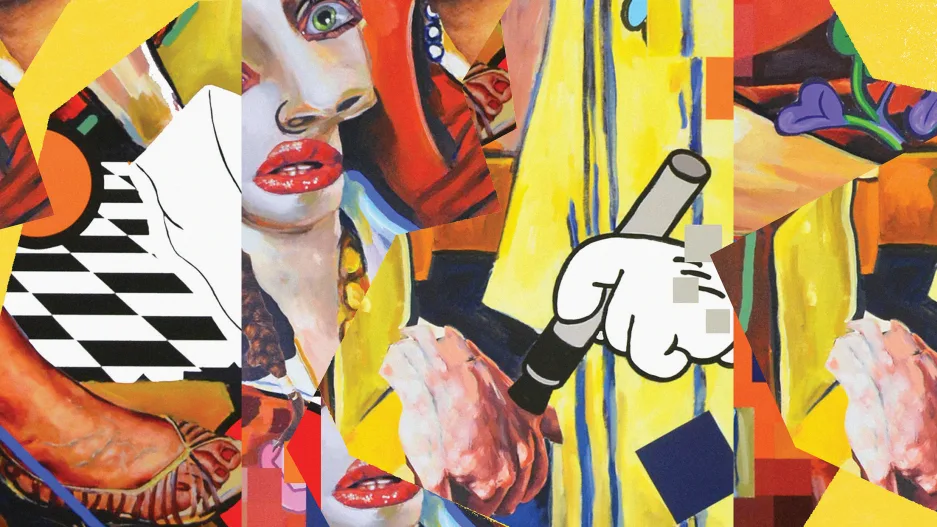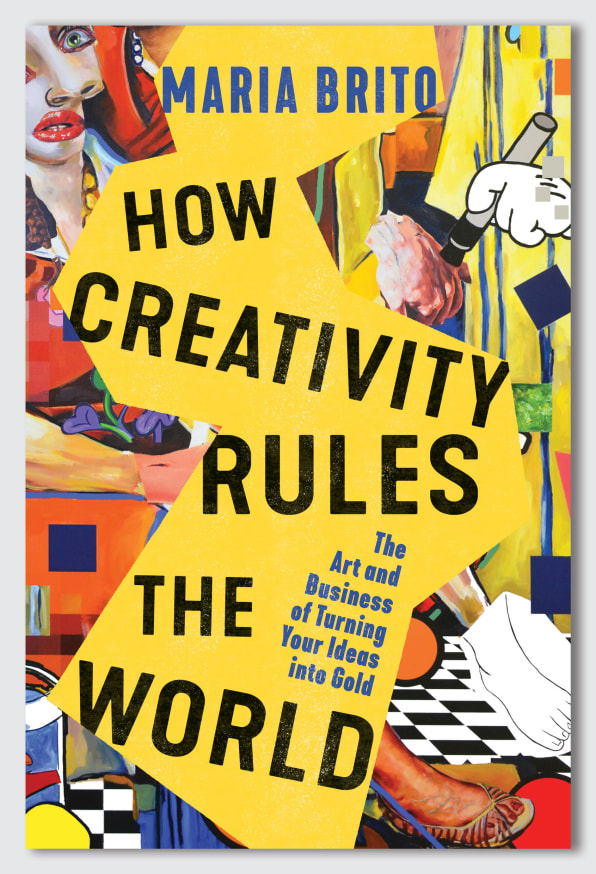- | 4:20 am
5 tricks to help you think like the world’s greatest designers

Designers are known to be exceptionally creative—but their success isn’t just luck and talent. Creativity is nothing more than an amalgamation of skills and habits that you must strengthen over time. This is particularly relevant now, as we navigate what’s become known as the Great Resignation. People everywhere are quitting their jobs, many of them because they were creatively stymied, leading to a surprising boom of new-business creation.

[Image: courtesy HarperCollins Leadership]
Throughout history, we’ve often seen the most innovative products come from those who consistently challenged their minds to see what others miss. As a result, they’ve designed objects that have changed the world.In my new book, How Creativity Rules the World: The Art and Business of Turning Your Ideas into Gold, I do a deep dive into the habits, skills, and tools used by the most creative people in history. Instead of being intimidated by what they achieved, be inspired by their creative process and think about how to replicate it.
FIND THE NEW IN THE OLD
Look to the past for inspiration. Being creative means you must look for ways to improve what already has been done in novel and exciting ways. The first camera was made in 1816 by French inventor Nicéphore Niépce. In 2006, Chinese graduate student Frank Wang designed and built a flying device carrying a light camera that could take pictures and videos from miles high. In 2014, his company, DJI, released a fully integrated camera drone. This innovative duality, an old camera and a new invention, led DJI to control about 70% of the camera-drone market, which is currently a $27 billion industry.
DECONSTRUCT
One way to apply the idea of deconstruction to a product or service is to start by looking for unique, isolated elements and then extract and combine them with something else. When Zenith and its engineers first started thinking about a remote in 1950, they considered attaching a wire to a “remote” they had deconstructed from a TV’s control panel. Later, in 1956, they figured out how to use directional light to facilitate channel changing. Since then, the remote control has mutated millions of times and expanded into other areas, ranging from car keys and air conditioners to apps on our phones, which can control just about anything.
Twitter is another example of how deconstruction can lead to enormously profitable and creative business ideas. Blogging started in 1994, with students publishing their writing on rudimentary websites they created. In time, blogs became more sophisticated. They contained longer posts, pictures, and videos. Enter Jack Dorsey and his partners, who, in 2006, launched the social network Twitter, which let people express themselves in microblogs. By 2012, more than 100 million users posted 340 million tweets a day. Today, the company is worth more than $13 billion.
AGGREGATE
The opposite of the previous concept, “more is more,” is the practice of combining different elements into one integrated whole. Think about what “concept stores” have been doing since their inception in the 1990s. They were first conceived by European retailers, who developed the idea of tailoring a shop with a lifestyle focus, carrying a curated selection of hand-picked products across such categories as fashion, art, books, and jewelry. In 1991, 10 Corso Como opened in Milan, pioneering the concept store and changing the business of retail forever. Today’s concept store blurs the line between retail and hospitality. Some offer cocktail bars, others restaurants, a few even offer spa services. That’s aggregation at its best.
Or look at the smartphone, the most revolutionary product of the past 50 years. It, too, is so successful because it aggregates many things. It’s a phone, camera, text messenger, email provider, internet browser, music player, video screen, and source of entertainment and distractions—all in one.
FIND HARMONY IN CONTRADICTIONS
What if you combine opposites in an unlikely way? This is what Coco Chanel did as the first fashion designer to craft the androgynous look in 1906, with her signature style of straight dresses and pants previously reserved for men. In 1920, another mix of opposites came to life: Chanel No. 5, the iconic perfume that put her name everywhere around the world.
When Chanel met French-Russian perfumer Ernest Beaux, she gave him a wish list of polarities. First, to make a fragrance that was “artificial, something that has been made like a dress . . . a woman should smell like a woman and not like a flower.” Second, a perfume that blurred the line between a respectable girl and a seductress. Mixing synthetic aldehydes, Beaux found the elixir that Chanel approved—a blend of opposing ideas and scents. Even the design of the bottle was a paradox for a women’s perfume. It wasn’t ornate and curvy like the competitors. It was rectangular, strong, and masculine, inspired by a whisky decanter that belonged to one of Chanel’s lovers. Chanel No. 5 was a sensation almost instantly.
MIX INTELLECTUAL CAPITAL
Look at the power of cross-pollination between fields and industries leading to innovation in design. The wearable-technology market was valued at $116 billion in 2021, and is one of the most innovative fields that sprang out of cross-fertilization. Starting in the 1960s with rudimentary computers strapped around the waist, wearable tech didn’t advance much until Finnish company Polar launched the first wire-free heart monitor in 1982. Invented at the intersection of medical equipment, science, industrial design, and technology, Polar became the go-to brand for anyone who wanted to monitor their heart rate, speed, effort, distance, and other variables while exercising or practicing sports.
In 2013, Fitbit launched its first wrist-worn tracker; and in 2014, Apple upped the ante when it released the Apple Watch. Avoiding the mentality that things have to be self-contained and “pure” allows us to invite the perspective of others who can add an expansive dimension.
Great designers and visionaries know that they must consistently and continuously keep the wheel turning if they want to create a long-lasting impact with what they do. They see the world around them as a chance to experience evolution and growth, to connect seemingly disparate dots. This can only happen when creativity is in full swing. You can do the same.





































